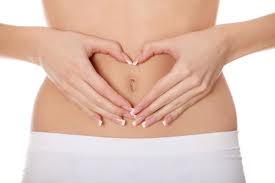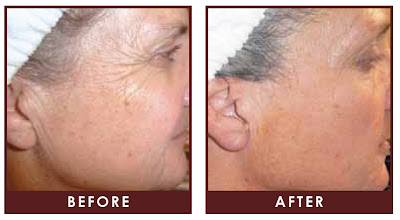 Over time, our bodies can start to be brought down by the toxins, chemicals, and waste that build up in our systems. Whether it is from external, environmental factors (like pollution or natural exposure to toxins) or something wrong internally (such as a poor diet ofunhealthy foods), it’s important to maintain your health by ridding these built up toxins.
Over time, our bodies can start to be brought down by the toxins, chemicals, and waste that build up in our systems. Whether it is from external, environmental factors (like pollution or natural exposure to toxins) or something wrong internally (such as a poor diet ofunhealthy foods), it’s important to maintain your health by ridding these built up toxins.
The topic of "detox" is overwhelming and you will come across nearly 56 million webpages. Let’s skip the sales pitch and find out some simple principles of detoxing, shall we
Natural detox: your body knows how
Your body is detoxifying all the time. The natural processes of metabolism create streams of waste, and we’re also ingesting, inhaling, and absorbing pathogens, chemicals, allergens, and other toxins. Our bodies work continually to deactivate and eliminate these harmful substances.
Natural detox is a collection of responses that occur throughout your body, literally without pause. And the human body is remarkably successful at disassembling and removing the majority of toxic substances and metabolic wastes.
What is the source of body toxicity?
In addition to the old-school toxins we’ve encountered for years, we now have an array of allergens, by-products, wastes, chemicals, and organisms that our bodies simply do not know how to process. It’s true that the human body is amazingly adaptable, but our systems have not yet adjusted to these diverse “foreigners to life,” or xenobiotics. Instead, these outsiders become part of an enormous “toxic load” we carry indefinitely.
Where are all these toxins — old and new — coming from? They’re all around us — in the air, water, food, and environment, and they may be disguised in some clever camouflage:
- Air, water, and environmental pollutants (including jet fuel residue)
- Food contaminants, such as pathogens and by-products of certain industrialization processes
- Chemicals we absorb, inhale, or ingest (from construction materials, furniture and flooring, clothing, cleaning supplies, personal care products, and more)
- Pharmaceutical medications (antibiotics, HRT, NSAID’s, etc.), recreational drugs, second-hand smoke, and alcohol
- Radiation and electromagnetic fields
- Heavy metals, aluminum, and toxic halides
- Hormones and endocrine disruptors
- Mold, mildew, and “superbug” pathogens
- Free radicals
In addition, problems with detoxification can occur right inside us. Because the gastrointestinal tract is your body’s initial interface with a large percentage of the toxins it encounters, any chronic digestive issue can interfere with detox. If you have IBS, for example, you may have trouble detoxifying — but an imbalance in your gut flora can also limit your gut’s natural detox function.
What’s surprising is that we ourselves generate some of the strongest, or most reactive, poisons and toxins. Many lifestyle factors have a grave impact on health, including poor diet, low water intake, lack of exercise, and inadequate rest. But emotions can be poisonous, too. Stress, anxiety, depression, and even “toxic” relationships affect you physically and add heavily to the load your body is trying to detoxify.
Some people have innate limitations in their ability to detoxify. In some cases, these factors can be “pathological” (leading to disease) when left unaddressed. Either they’re born with genetic traits that interfere with healthy liver function (such as a GSTM 1 polymorphism) or normal metabolism of nutrients (for example, an MTHFR polymorphism), or they develop detox issues as a result of lifestyle influences or hormone imbalance during perimenopause.
Even under such challenging conditions, toxicity is not your destiny. There is a tremendous amount you can do — right away — to limit and offset the effects of toxins. And of course, stopping poisonous substances from entering your system in the first place should be a top priority.
Natural detoxification systems — the whole-body concept
Detoxification is accomplished by many internal systems and organs working in unison to identify, deactivate, and eliminate toxic substances. These mundane reactions help clear out toxins and purify your internal environment.
- Respiration: breathing (gas exchange), coughing, sneezing, clearing mucus
- Skin: sweating, sebaceous (oil) gland secretion, tears

- GI system: liver function, intestinal tract function (our “first line” defense), including stool excretion
- Kidneys: acid/alkaline balancing, urination
- Circulation and lymph systems: blood flow, lymph circulation, node function
Because all these systems cooperate for whole body detoxification, problems in any one can allow toxins to accumulate, or interferes with the removal of highly reactive compounds, which can then move in and camp out in your organs and tissues.
Let’s take a closer look at how the job of detoxification is divided up.
Liver
The liver is the powerhouse of detoxification, since one of its primary functions is to isolate and biotransform toxic molecules so they can be eliminated. With its ability to create various enzymes and chemicals, the liver quickly deactivates most poisons you take in or create. Our special page on liver function shows how you can provide support to keep this critically important organ functioning well.
Kidneys
Your kidneys act as an advance filtering system to catch wastes and toxins circulating in your blood and eliminate them through urination. If this process becomes sluggish or begins to fail, poisonous substances build up, and your health can deteriorate rapidly. Supporting kidney function involves eating an alkalizing diet, with mineral-rich fruits and vegetables, and drinking plenty of pure water (distilled, filtered, or spring). Alcohol, particularly in excess, can be very hard on the kidneys.
GI tract
When the gut isn’t healthy...
“Leaky gut syndrome” occurs when the lining of the GI tract becomes porous, allowing food particles to directly enter the bloodstream. Such particles are considered toxins by the immune system, so leaky gut can be the starting point for some food allergies and systemic inflammation.
For natural detoxification, there is nothing more important than good digestive health. Your gut is the gateway for most pathogens, but it is also your initial defense against toxins, germs, and unwanted substances. Taking care of the GI tract starts with choosing non-toxifying foods, and results in better elimination — the prime vehicle for toxin removal.
Your GI tract is lined with a mucous membrane that, when healthy, forms an “intelligent” barrier that helps prevent toxins from entering your bloodstream and allows escaped xenobiotics to pass back into the intestines for elimination (called “antiporter” detox). Good GI health through proper diet can help keep this membrane intact and functioning well. A healthy supply of “friendly bacteria” in the gut helps you handle the food you eat and wards off any pathogens lurking in your food. Gut flora can also stop pathogens from re-entering your system until your body can dispose of the intruders.
Fluidity is Key
First things first: fluidity is key! When it comes to detoxifying the body, you want to provide the body with a simple, seamless route for excavation. By and large, removing the waste and toxicity through fluids is the most promising. (Some argue in favor of “sweating it out”, but this will require keeping hydration levels high as well!). Keep these things in mind:
- Eight 8-oz glasses/day – The normal recommendation is to drink up to eight 8-oz glasses per day. This is quite a bit of water, but it provides the body with just its basic needs for growth, maintenance, and proper health. When detoxing, it’s important to get this and more!
- Be Strategic – When it come to getting enough fluids, be strategic in your approach. Keep water where you send most of your time, mix up your intakes sources (juice, iced tea, coconut water), and consider setting a timer to get you drinking every few hours.
- Hydrate through Foods – Of course, you also want to get plenty of water from your foods. Foods like celery are great for getting nutrition along with hydration – make them a part of your hydrating regimen! Check out the citruses and apples in mind, too!
Sustaining a Healthy Body
When it comes to detoxing, be sure to keep in mind that you are what you eat. It’s actually quite likely you’re feeling groggy, weakened, and frustrated because of the food you’ve been eating. That being said, the next time in detoxing naturally is to supply yourself with the nutrients you need to get full nourishment. Follow these simple tips for better eating:
- Quit the Bad – To start, stop eating the bad foods you’re eating right now! Ward yourself away from processed, refined foods and sugary, non-nutritious ‘meals’ that so often stock the shelves at our local stores. This is also your chance to do some digging with your favorite brands and find out if that snack of yours is contributing to your poor feelings.
- Eat Whole – In replacement of these incomplete foods, start supplying yourself with whole, nutritious foods. Going organic is also the best choice, as the pesticides and chemicals found in artificial fertilizers may be contributing your poor health. Also, avoid GMO foods altogether. With the considerably controversy behind these foods, as well as the adamant stance of companies to not allow testing or labeling, GMO foods cannot be considered safe.
- Increase the Raw – Eating more raw food can also be your ticket to better health. As they say, if you cook it, you kill it. Raw foods are more nutritious, have fewer carcinogens, and can help you push out the toxins currently in your body.
- More Greens – Finally, eat more greens! Getting a few extra servings of fruits and veggies is probably something you need to do anyways, so take your detox as the first opportunity to really implement this change.
- Stretch it out – With simple stretches, you can improve your digestion system, circulation, and energy level. Take time everyday to sit down, relax, and stretch out the bad that has been building up.
I'ts a Lifestyle
Having a healthy, whole body does not need to be hard- make it simple and make it successful.
Reference: Womentowomen.com














